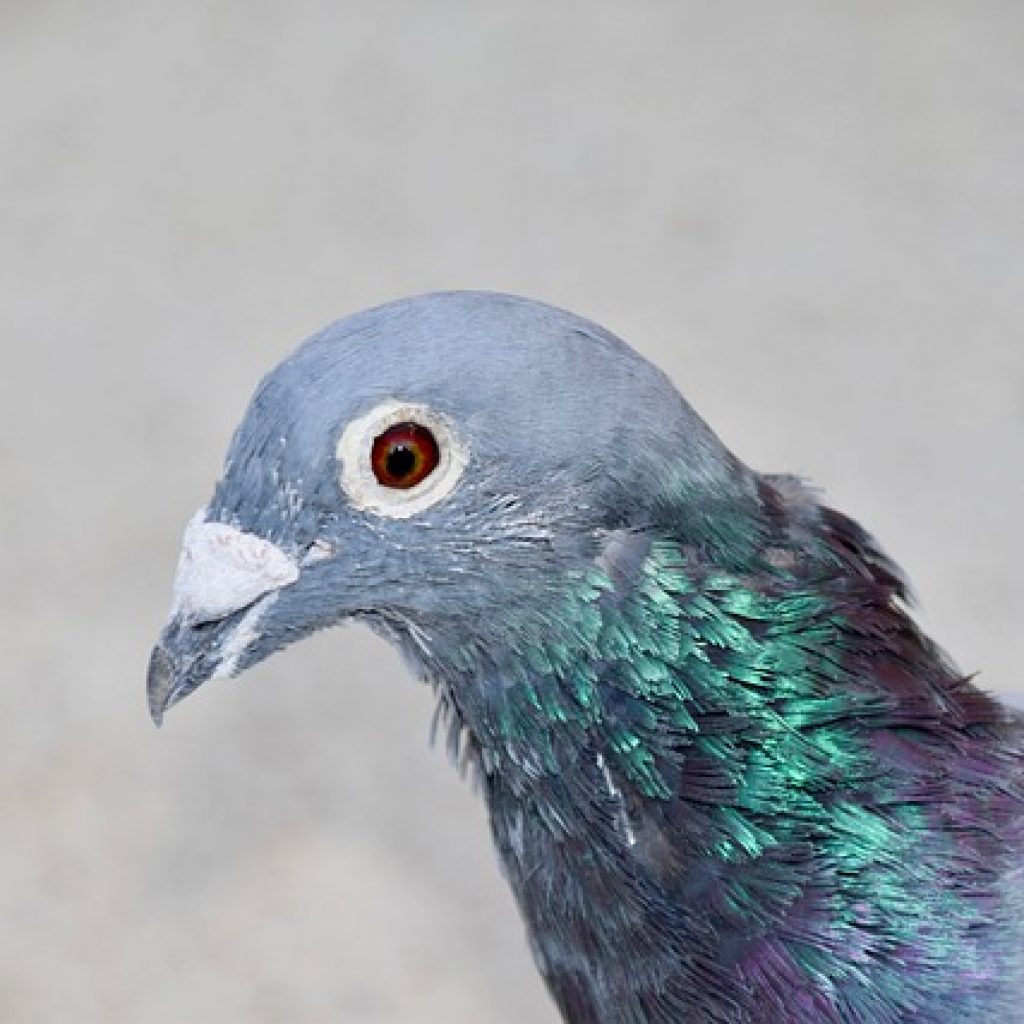(U.Melbourne.edu) Quantum microscopy is able to image tiny biological magnetic structures inside a pigeon’s ear and may help to explain how animals use magnetic fields to navigate.
A homing pigeon is able to navigate over hundreds of kilometres using its magnetic sense. These animals were used for communication over 2000 years ago – Julius Caesar sent news of his conquest of Gaul back to Rome by carrier pigeon. Pigeons were also critical for messaging in the two World Wars .
The magnetic sense was revealed by Wolfgang Wiltschko and Friedrich Merkel in the 1960s who tracked pigeons within circular flight simulators at a time close to the beginning of their normal migration. The direction of the magnetic field was then artificially adjusted, and the flight was again tracked. The results showed a statistically significant association between the direction of the pigeon’s flight and the direction of the magnetic field within the chamber.
Although we know that pigeons and other animals have indeed developed this incredible magnetic sense, we are yet to uncover the actual biophysical mechanisms that give rise to magnetoreception. One model is that some organisms contain magnetic particles.
Professor David Keays and his team at the Institute of Molecular Pathology in Vienna team have discovered single isolated iron-based structures in a variety of avian species, including the common homing pigeons.
Could quantum magnetic microscopy help shed light on this century-old question about how certain creatures navigate? Quantum magnetic microscopy is a relatively new imaging technique that uses a thin sheet of synthetic diamond crystal about four millimetres square to image weak magnetic fields with extremely high resolution.
Robert Walter De Gille and Dr David Simpson, University of Melbourne teamed up with Professor Keays’s group in Vienna to explore whether quantum magnetic microscopy can be applied to study the magnetic properties of iron cuticulosomes found within the inner ear of pigeons.
Detailed studies were carried out in two distinct regions of the pigeon inner ear. The sensitivity of our quantum magnetic microscope allowed us to detect the magnetic field from single iron cuticulosomes, and correlate their position within the anatomy of the pigeon’s ear.
The results suggest that the magnetic susceptibility of cuticulosomes is five orders of magnitude too small to act as particle-based magnetoreceptors, leaving iron storage and stabilisation of stereocilia (structures required for hearing and balance) as possible functions for cuticulosomes.
Although the true mechanism to describe magnetoreception in pigeons remains unresolved for now, the findings of this study are of great value to biologists wishing to explain the physiological functions of cuticulosomes. They are also valuable to neurobiologists trying to explain the perplexing problem of magnetoreception, and to physicists developing new applications for quantum magnetic microscopy.
Using quantum microscopy to study biological magnetic structures inside pigeon’s ear to understand how animals navigate
